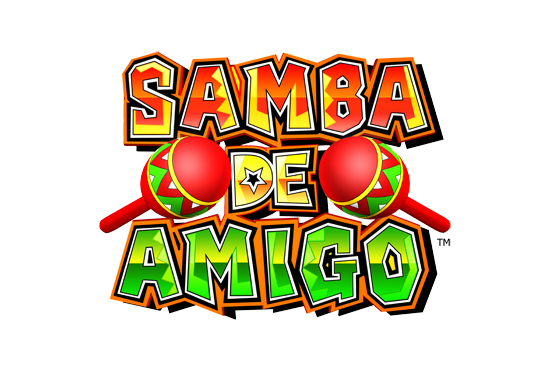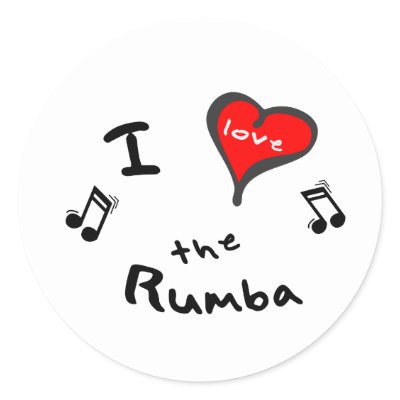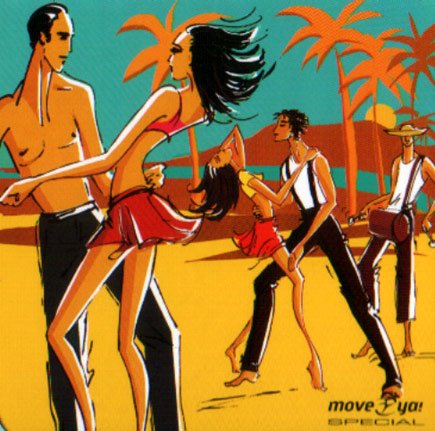Early tango was known as tango criollo. Today, there are different types of tango dance such as Argentine tango or Uruguayan. Popularly and among tango dancing circles, the authentic tango is considered to be the one which is closest to that originally danced in Argentina and Uruguay. In 2009, Argentina and Uruguay suggested that the Tango be inscribed onto the UNESCO Intangible Cultural Heritage Lists and in October of the same year UNESCO approved it.
Tango is a dance that has influences from European and African culture.Dances from the candombe ceremonies of former slave peoples helped shape the modern day Tango. The dance originated in lower-class districts of Buenos Airesand Montevideo. The music derived from the fusion of various forms of music from Europe.The word "tango" seems to have first been used in connection with the dance in the 1890s. Initially it was just one of the many dances, but it soon became popular throughout society, as theatres and street barrel organs spread it from the suburbs to the working-class slums, which were packed with hundreds of thousands of European immigrants, primarily Italians, Spanish and French.
he Tango consists of a variety of styles that developed in different regions and eras of Argentina as well as in other locations around the world. The dance developed in response to many cultural elements, such as the crowding of the venue and even the fashions in clothing. The styles are mostly danced in either open embrace, where lead and follow have space between their bodies, or close embrace, where the lead and follow connect either chest-to-chest (Argentine tango) or in the upper thigh, hip area (American and International tango).
Different styles of Tango are:
- Tango argentino
- Tango canyengue
- Tango Oriental Uruguayan tango
- Tango liso
- Tango salon
- Tango orillero
- Tango camacupense (Angola)
- Tango milonguero (Tango apilado)
- Tango Nuevo (New Tango)
- Show Tango (also known as fantasia)
- Ballroom tango
- Finnish tango
The original form of the dance and music are alive and well in Cuba and in taught in dance studios in Mexico City. An example of authentic Mambo dance can be seen in the film 'The Motorcycle Diaries'.
Merengue is a style of Dominican music and dance. Partners hold each other in a closed position. The leader holds the follower's waist with the leader's right hand, while holding the follower's right hand with the leader's left hand at the follower's eye level. Partners bend their knees slightly left and right, thus making the hipsmove left and right. The hips of the leader and follower move in the same direction throughout the song. Partners may walk sideways or circle each other, in small steps. They can switch to an open position and do separate turns without letting go each other's hands or releasing one hand. During these turns they may twist and tie their handhold into intricate pretzels. Other choreographies are possible.
Although the tempo of the music may be frenetic, the upper body is kept majestic and turns are slow, typically four beats/steps per complete turn.
In the social dancing of the United States the "empalizada" style is replaced by exaggerated Cuban motion, taught in chain ballroom studios for dances of Latin American origin (cha-cha-cha, rumba, mambo, salsa).
Bachata is a style of dance that originated in the Dominican Republic. It is danced widely all over the world but not identically.
The basics to the dance are three-step with a Cuban hip motion, followed by a tap including a hip movement on the 4th beat. The knees should be slightly bent so the performer can sway the hips easier. The movement of the hips is very important because it's a part of the soul of the dance. Generally, most of the dancer's movement is in the lower body up to the hips, and the upper body moves much less.
The original dance style from the Dominican Republic in the Caribbean is a basic dance sequence is a full 8 count moving within a square. Dancers in the Western World later began developing a more simple pattern, also in a full 8 count, but with a side-to-side motion. Both Styles consist of 3 steps normal and then a tap step. The tap is often accompanied by a “pop” of the hips, and is sometimes substituted with syncopations (steps in between the beats - some similar to cha-cha-cha steps and others much different). Bachata music has an accent in rhythm at every fourth count. Often, this is when dancers will tap-step & pop their hips - this is called dancing bachata to the music (because the first step after the pop falls on the 1st beat of the measure). But bachata can be danced to different timings as well if it's danced to one particular instrument instead. The tab or 'pop' is done in the opposite direction of the last step, while the next step is taken on the same direction as the tap or pop. The dance direction changes after the tap or fourth step.
In Ballroom dancing, Jive is a dance style in 4/4 time that originated in the United States from African-Americans in the early 1930s. It was originally presented to the public as 'Jive' in 1934 by Cab Calloway. It is a lively and uninhibited variation of the Jitterbug, a form of Swing dance. Glenn Miller introduced his own jive dance in 1938 with the song "Doin' the Jive" which never caught on.
 Jive is one of the five International Latin dances. In competition it is danced at a speed of 176 beats per minute, although in some cases this is reduced to between 128 and 160 beats per minute.
Jive is one of the five International Latin dances. In competition it is danced at a speed of 176 beats per minute, although in some cases this is reduced to between 128 and 160 beats per minute.
After the war, the boogie became the dominant form for popular music. It was, however, never far from criticism as a foreign, vulgar dance. The famous ballroom dancing guru, Alex Moore, said that he had "never seen anything uglier". English instructors developed the elegant and lively ballroom Jive, danced to slightly slower music. In 1968 it was adopted as the fifth Latin dance in International competitions. The modern form of ballroom jive in the 1990s-present, is a very happy and boppy dance, the lifting of knees and the bending or rocking of the hips often occurs.
Overall Jive is a dance and is the faster version of the swing. A lot of kicks are used in jive with a bouncy type movement using the balls of the feet a lot. It is an American dance originated from the Jitterbug dance, and it is danced without the lifts and acrobatic elements. Jive is a fast and energy-consuming dance. It is normally the last dance danced at competitions because of the energetic style.
Samba is a Brazilian dance and musical genre originating in Bahia and with its roots in Brazil (Rio De Janeiro) and Africa via the West African slave trade and African religious traditions. It is recognized around the world as a symbol of Brazil and the Brazilian Carnival. Considered one of the most popular Brazilian cultural expressions, samba has become an icon of Brazilian national identity. The Bahian Samba de Roda (dance circle), which became a UNESCO Heritage of Humanity in 2005, is the main root of the samba carioca, the samba that is played and danced in Rio de Janeiro.
The modern samba that emerged at the beginning of the 20th century is basically 2/4 tempo varied with the conscious use of chorus sung to the sound of palms and batucada rhythm, adding one or more parts or stanzas of declaratory verses. Traditionally, the samba is played by strings (cavaquinho and various types of guitar) and various percussion instruments such as tamborim. Influenced by American orchestras in vogue since the Second World War and the cultural impact of US music post-war, samba began to use trombones, trumpets, choros, flutes, and clarinets.
In addition to rhythm and bar, samba brings a whole historical culture of food, varied dances (miudinho, coco, samba de roda, and pernada), parties, clothes such as linen shirts, and the NAIF painting of established names such as Nelson Sargento, Guilherme de Brito, and Heitor dos Prazeres. Anonymous community artists, including painters, sculptors, designers, and stylists, make the clothes, costumes, carnival floats, and cars, opening the doors of schools of samba.
 The Samba National Day is celebrated on December 2. The date was established at the initiative of Luis Monteiro da Costa, an Alderman of Salvador, in honor of Ary Barroso. He composed "Na Baixa do Sapateiro" even though he had never been in Bahia. Thus 2 December marked the first visit of Ary Barroso to Salvador. Initially, this day was celebrated only in Salvador, but eventually it turned into a national holiday.
The Samba National Day is celebrated on December 2. The date was established at the initiative of Luis Monteiro da Costa, an Alderman of Salvador, in honor of Ary Barroso. He composed "Na Baixa do Sapateiro" even though he had never been in Bahia. Thus 2 December marked the first visit of Ary Barroso to Salvador. Initially, this day was celebrated only in Salvador, but eventually it turned into a national holiday.
Samba is a root style in Southeastern Brazil and Northeast Brazil, especially in Rio de Janeiro, Sao Paulo, Salvador and Belo Horizonte. Its importance as Brazil's national music transcends region, however; samba schools, samba musicians and carnival organizations centered around the performance of samba exist in every region of the country and, while regional musics prevail in other regions (for instance, in Southern Brazil, Center-West Brazil, and all of the Brazilian countryside, Sertanejo, or Brazilian country music, is the most popular style). Since Rio de Janeiro is the most popular Brazilian city worldwide, usually samba is used to identify Brazilians as part of the same national culture, even if nowadays Sertanejo is the most popular style in Brazil.
Rumba is a family of percussive rhythms, song and dance that originated in Cuba as a combination of the musical traditions of Africans brought to Cuba as slaves and Spanish colonizers. The name derives from the Cuban Spanishword rumbo which means "party" or "spree". It is secular, with no religious connections.Rhythmically, Afro-Cuban folkloric rumba is based on the five-stroke pattern called clave and the inherent structure it conveys. Carlos Vidal Bolado (better known simply as Carlos Vidal) was the first to commercially record authentic folkloric rumba (Ritmo Afro-Cubano SMC 2519-A and 2520-B, circa 1948).
Rumba has also been described by some as a folkloric music and dance complex combination. This may because of the influences rumba has from the music and culture presented by Africans who were brought by the Spanish colonizers to Cuba to be slaves. The mixing of these two cultures, among others that later came into the culture, created a deeply rooted people.

Personaly,rumba is my favorite latin dance!!
Rumba has also been described by some as a folkloric music and dance complex combination. This may because of the influences rumba has from the music and culture presented by Africans who were brought by the Spanish colonizers to Cuba to be slaves. The mixing of these two cultures, among others that later came into the culture, created a deeply rooted people.

Cuban music is diverse in styles and background that comes from several cultures. In this area of Cuban music, Rumba is a generic term covering a variety of musical rhythms and associated dances. In this style, that includes a combination of both music and dance, vocal and rhythmic improvisation is both involved This includes a smooth combination of music, dance and poetry to produce a unique sound and dance
Rumba is now most commonly performed at informal fiestas or just in the street when the mood arises. Percussions and vocal sections make up rumba’s musical ensemble This African derived rumba dance and music also inspires poets and in turn they also inspire the dance and chants. Some poets, including Carmen Cordero and Maya Santos Febres, have said that a “poetic portrayal of dance maintains its meaning as a vehicle of resistance.” This could be taken as pushing for change and acceptance. These ideas go well with the expression associated with the rumba when it first emerged and when it became more widely accepted by all Cubans.
Personaly,rumba is my favorite latin dance!!
The Cha-cha-cha is the name of a dance of Cuban origin.It is danced to the music of the same name introduced by Cuban composer and violinist Enrique Jorrín in 1953. This rhythm was developed from the danzón by a syncopation of the fourth beat. The name is onomatopoeic, derived from the rhythm of the güiro (scraper) and the shuffling of the dancers' feet.
The modern style of dancing the cha-cha-chá comes from studies made by dance teacher Monsieur Pierre (Pierre Zurcher-Margolle), who partnered Doris Lavelle.
 Cha-cha-cha may be either danced to authentic Cuban music, or Latin Pop or Latin Rock. The music for the international ballroom cha-cha-cha is energetic and with a steady beat. The Cuban cha-cha-chá is more sensual and may involve complex polyrhythms.
Cha-cha-cha may be either danced to authentic Cuban music, or Latin Pop or Latin Rock. The music for the international ballroom cha-cha-cha is energetic and with a steady beat. The Cuban cha-cha-chá is more sensual and may involve complex polyrhythms.
Styles of cha-cha-cha dance may differ in the place of the chasse in the rhythmical structure. The original Cuban and the ballroom cha-cha-cha count is "two, three, chachacha" or "four-and-one, two, three". The dance does not start on the first beat of a bar, though it can start with a transfer of weight to the lead's right.
Nevertheless, many social dancers count "one, two, cha-cha-cha" and may find it difficult to make the adjustment to the "correct" timing of the dance.
Cha-cha-cha is one of the five dances of the "Latin American" program of international ballroom competitions.
In general, steps are kept compact and the dance is danced generally without any rise and fall. The modern ballroom technique of Cha-cha-cha (and other ballroom dances) does undergo gradual evolution, particularly in competition dancing, but in essence is still firmly based on its Cuban origin in the 1950s.
 Many popular dances originated in Latin America, and so are referred to as Latin dances. International Latin is the name of a category of International style ballroom dances. International Latin dances consist of the following five dances - Cha cha, Rumba, Samba, Paso Doble, Jive.
Many popular dances originated in Latin America, and so are referred to as Latin dances. International Latin is the name of a category of International style ballroom dances. International Latin dances consist of the following five dances - Cha cha, Rumba, Samba, Paso Doble, Jive.
Compared to other ballroom dances, Latin dances are generally faster-paced, more sensual, and have more rhythmic expression. The latin dances are for couples, typically a man and a woman. Partners sometimes dance in a closed, tight position, and sometimes hold only one hand. Latin dancing, as Latin music, is sultry and physical. Quick paced rhythms and playful movements make the various Latin dances endlessly entertaining, sometimes even breathtaking.
Εγγραφή σε:
Αναρτήσεις
(
Atom
)
missunderstood. Από το Blogger.
Popular Posts
-
Bachata is a style of dance that originated in the Dominican Republic . It is danced widely all over the world but not identically. T...
-
Many popular dances originated in Latin America, and so are referred to as Latin dances. International Latin is the name of a category of ...
-
Tango dance originated in Rio de la Plata, and spread to the rest of the world soon after. Early tango was known as tango criollo . T...
-
Mambo is a Latin dance of Cuba . Mambo music was invented during the 1930s in Havana by Cachao and made popular by Perez Prado and ...










